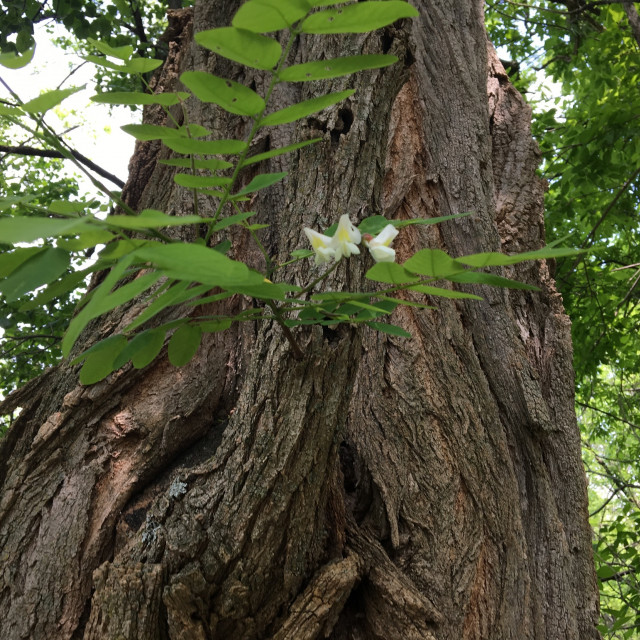COMMON NAME
Black locust
SCIENTIFIC NAME
Robinia pseudoacacia
Plant family
Pea (Fabaceae)
Plant group
Deciduous Trees and Shrubs
Black locust is a perennial deciduous tree typically between 30 and 60 feet tall, native and introduced across the entire continental United States and also introduced to parts of Canada.
553 reports
188+
OBSERVERS
553+
OBSERVATIONS
Identification hints
Black locust trees have distinctive creamy-white fragrant flowers, found in clusters and is a medium-sized deciduous tree. The fruits resemble a giant, brown pea-pod. The leaves of black locust are divided into leaflets making each true leaf look like many tiny paired leaves on a single stalk.
Did you know?
Black locust is one of the largest species in the pea family (legumes, Fabaceae) which largely includes smaller shruby plants. Like other species in the family, black locust can enrich the soil in which it is growing with nitrogen. The wood of black locust is strong, hard, and extremely durable. It is very useful for fencing, mine timbers, and landscaping ties. The tree also serves as a good erosion control plant on critical and highly disturbed areas, due to its ease of establishment, rapid early growth and spread, and soil building abilities. Although native, black locust can be an aggressive competitor that suppresses the growth of other plant species should therefore be treated with caution.
DISTRIBUTION IN TH U.S.
Alabama
,
Arkansas
,
Arizona
,
California
,
Colorado
,
Connecticut
,
Delaware
,
Florida
,
Georgia
,
Iowa
,
Idaho
,
Illinois
,
Indiana
,
Kansas
,
Kentucky
,
Louisiana
,
Massachusetts
,
Maryland
,
Maine
,
Michigan
,
Minnesota
,
Missouri
,
Mississippi
,
Montana
,
North Carolina
,
North Dakota
,
Nebraska
,
New Hampshire
,
New Jersey
,
New Mexico
,
Nevada
,
New York
,
Ohio
,
Oklahoma
,
Oregon
,
Pennsylvania
,
Rhode Island
,
South Carolina
,
South Dakota
,
Tennessee
,
Texas
,
Utah
,
Virginia
,
Vermont
,
Washington
,
Wisconsin
,
West Virginia
,
Wyoming
HABITAT
Black locust is seen as aggressive and undesirable in some areas precisely because it thrives in so many light, moisture, and soil conditions.
ATTRIBUTES
Leaves
Each true leaf of a black locust is divided into oval-shaped leaflets that are as large 2 inches long and 1 inch wide with smooth edges and rounded tips. Leaflets and are borne opposite out of the central "stem" of the true leaf (rachis) with one leaflet at the end of the leaf (odd pinnately compound). The leaves are green to bluish green turning yellow in fall, and very delicate, appearing like leaves in other plants in the pea family.
Flowers
The flowers of black locust emerge after the leaves and are creamy white to yellow and fragrant due to high nectar content. The blossoms are arranged in hanging clusters. The flowers have the distinctive flower shape of plants in the pea family (called papilionaceous), with banner and keel petals.
Fruits
Being in the pea family, the fruits of black locust look like bean pods! Pods tend to be less than 5 inches long and about 1/2 inch wide, and they typically contain 4 to 8 seeds. Pods are straight to slightly curved and typically brown. The seeds are dark orange-ish brown with irregular markings.
Bark
The bark of black locust has deep furrows along the length of the trunk and is generally gray to black with hints of red and orange. The younger branches may initially have a silvery appearance that fades and may or may not be covered in spines that also disappear with age.
Bloom Time
Black locust tends to bloom between April and June.
See Menu
- 2021 Chicago Botanic Garden. All Rights Reserved.
-
Creative Commons
BY-NC-SA 4.0 - Terms of Use
- Privacy Policy
- Data Sharing and Citation Policies
- 2021 Chicago Botanic Garden. All Rights Reserved.



